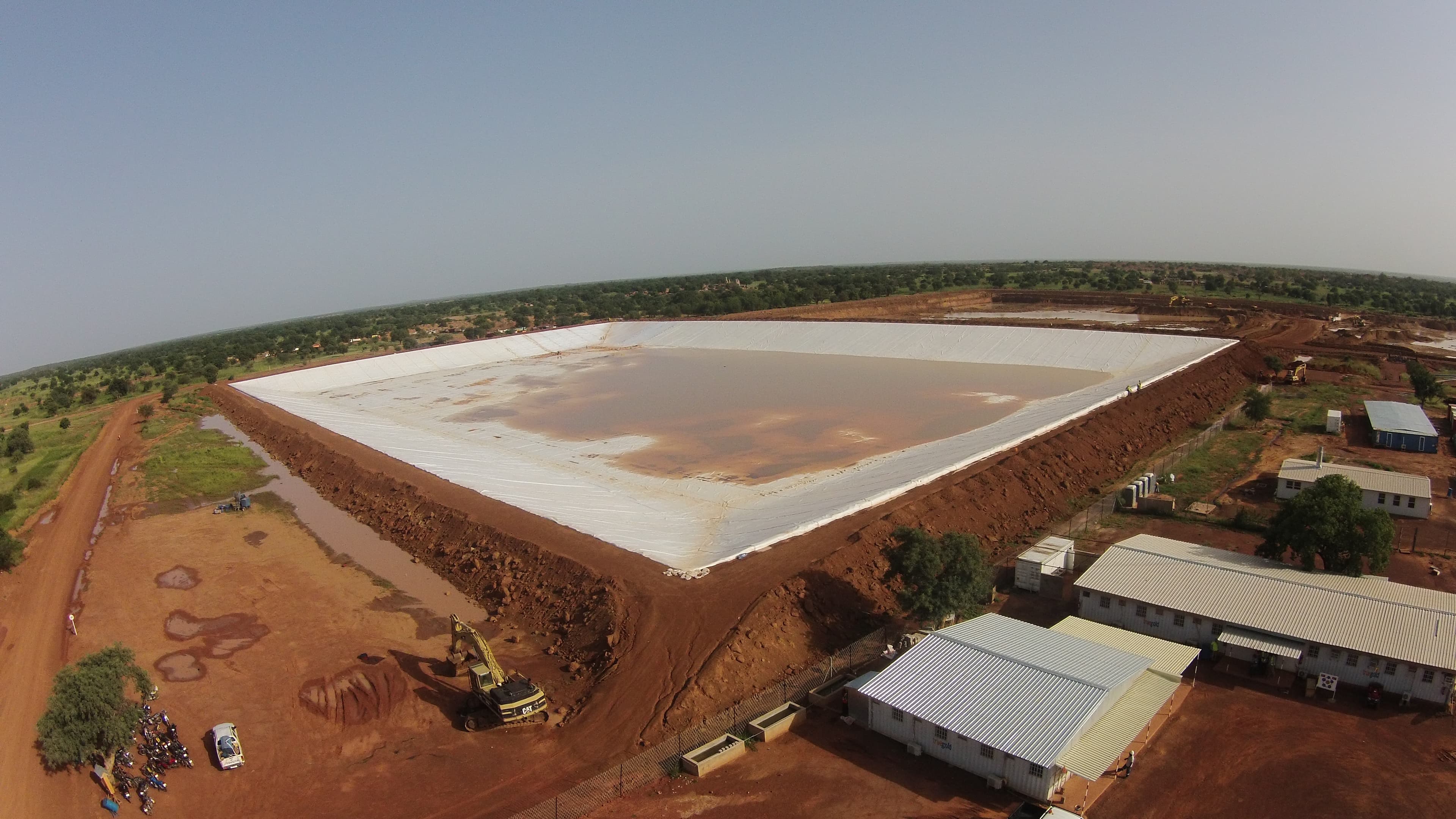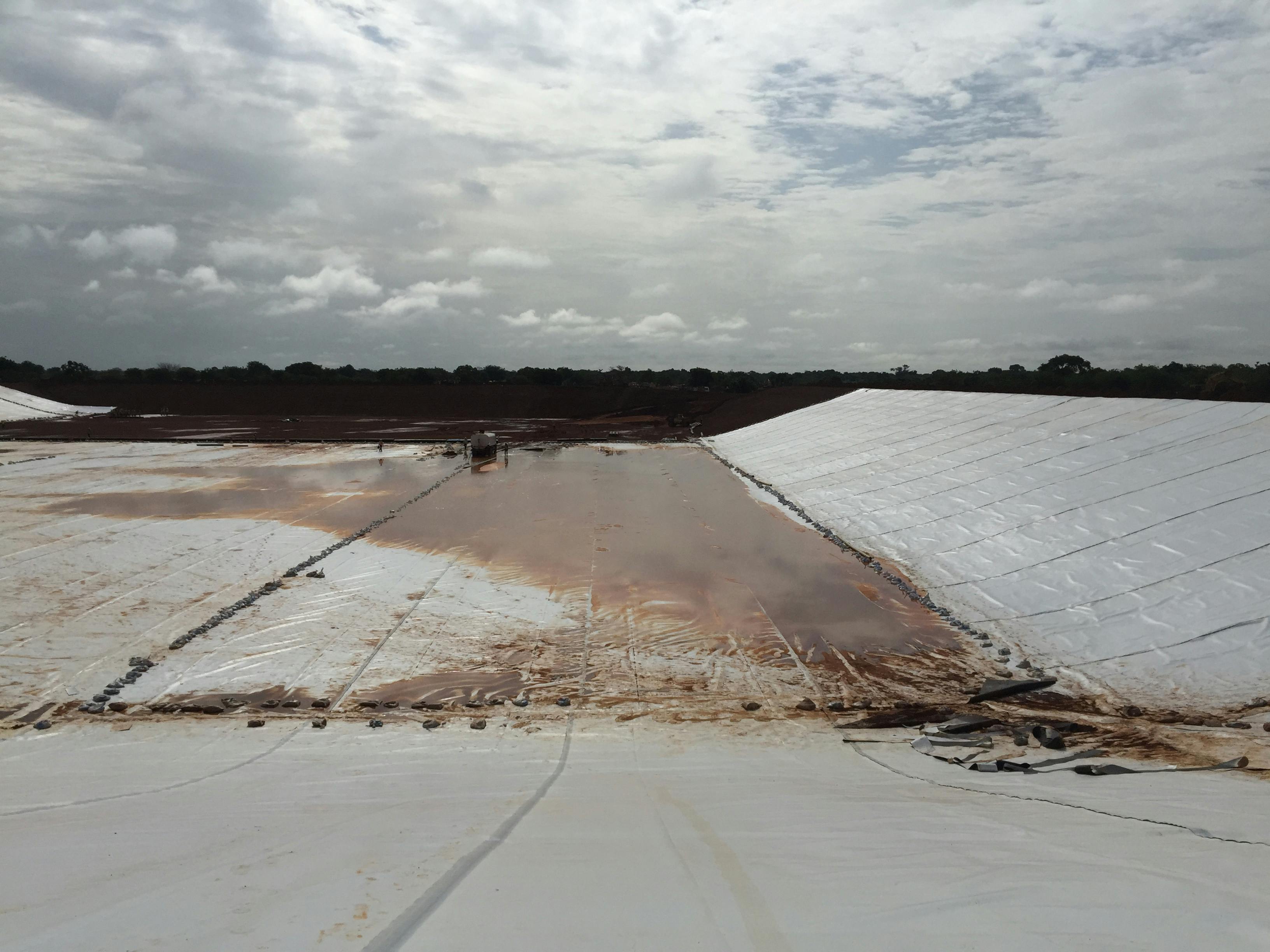Overview
Solmax cost reduction program (CRP) is designed to minimize project costs by utilizing top quality resins to produce optimal products that meet project specific needs. In the CRP, performance testing of geomembranes is tailored to project specific needs by simulating expected field loading conditions and utilizing materials from the site. Following the tests, the most cost effective geomembrane solution for maximum performance in an application is selected from potential alternatives.
The case study described here showcases the successful application of the Solmax CRP to a heap leach gold mining project in West Africa. Solmax’s containment solutions supplied for the project consisted of GSE® HD: Single Textured Black and Smooth White Reflective. These products were supplied in 2014 to cover over 742,000m² (7,987,800 ft²). By taking advantage of the Solmax CRP, approximately 33% reduction in project costs was achieved and product performance was not compromised. The Karma property consists of five closely spaced and well-defined gold deposits that are in Burkina Faso, West Africa. The deposits are mined using conventional open pit mining methods and equipment and ore recovery is by heap leaching.
Challenge
In the design of the heap leach pad an impermeable base was required in large part to reduce the risks of environmental contamination from leaching solutions and chemicals and to maximize recovery. The design specification required that a composite liner be placed on a compacted sub base to form an impermeable base.
The composite liner that was initially specified in the design consisted of a 1.5 mm thick GSE HD geomembrane placed on top of a 600 mm layer of the in-situ ferricrete material compacted to 95% Mod AASHTO.
A common goal in projects is to maximize benefits while keeping costs low. It was therefore expedient to evaluate areas within the design where this could be achieved. For this, the need for a 1.5 mm GSE HD in the heap leach pad base was re-evaluated using Solmax’s CRP.
Solution
As part of Solmax CRP, high pressure hydrostatic tests were performed on specimens from a 1.5 mm and a 1.0 mm HDPE geomembrane. The tests were performed following ASTM D5514-12 “Standard Test Method for Large Scale Hydrostatic Puncture Testing of Geosynthetics”. A maximum pressure of 1000 kPa was applied to individual specimens from both materials and each test lasted 100 hours.
The soil sample used for the tests was supplied from the site to simulate expected service conditions as closely as possible. Upon completion of the High Pressure Puncture Testing tests, the expected field performance of the geomembrane materials was evaluated by assessing plastic deformation in the test specimens after 24 hours of recovery. Specimens from both GSE HD geomembranes showed no signs of plastic deformation after the recovery period. Since both materials showed comparable performance for the application based on the test results, it was evident that the higher thickness of the geomembrane did not offer a superior performance in this instance and as such the 1.0 mm GSE HD Series would be a cost-effective alternative for the application.
Thus, because of the CRP, the thickness of GSE HD specified for the base of the heap leach pad was reduced from 1.5 mm to 1.0 mm and cost savings of approximately 33% were achieved. Every application and site is unique; Solmax’s CRP is a great way to sift through potential alternatives to determine the best geomembrane solution for an application with regard to cost and performance. Results from the implementation of Solmax’s CRP in a project should not be used generically for similar applications since site conditions can vary widely. Every application should be evaluated on a case-by-case basis using the expected field loading conditions and site specific materials.
In addition to the CRP solution, GSE white reflective geomembranes were used in applications that will be exposed or have parts exposed for extended periods such as stormwater, raw water and detox ponds. The geomembranes were chosen for their beneficial material properties in these applications. The white reflective prime finish surface of the geomembranes reflects UV light, and prevents excessive temperature rise in the geomembrane, thus enhancing the durability of the geomembranes significantly.

